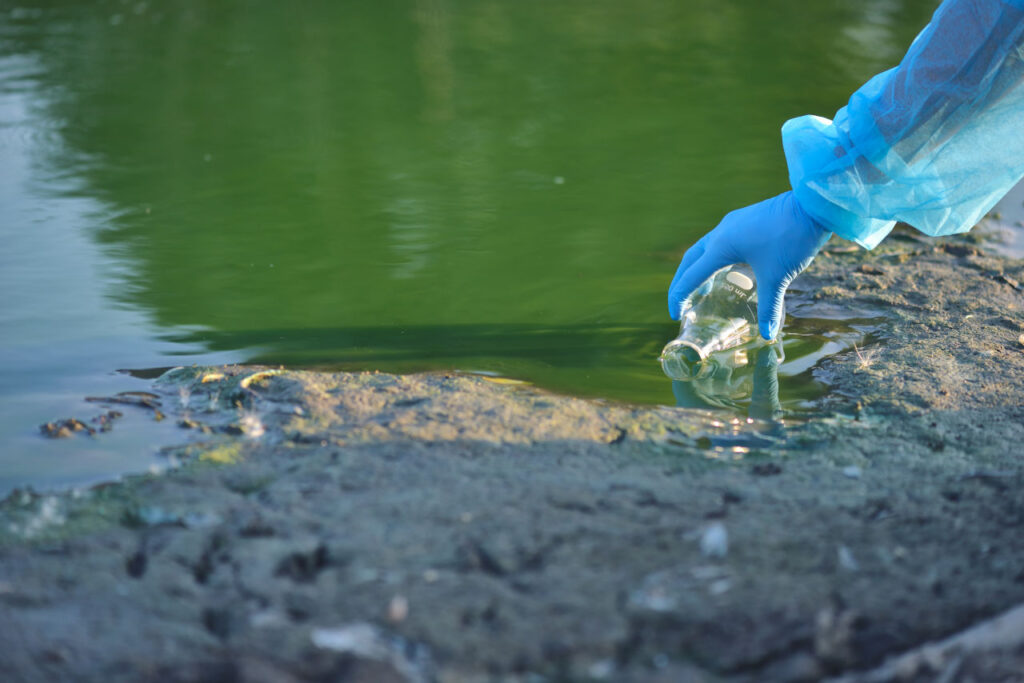Micropollutants: what molecules are contaminating our water?
Today, our aquatic environments are polluted by numerous waste products and chemical molecules. Some of these pollutants are invisible to the naked eye. These are known as micropollutants. These are chemical molecules found in aquatic environments at very low concentrations.
Geoffroy Duporté, University of Montpellier

By way of comparison, the mineral salts contained in drinking water, such as calcium, potassium and magnesium, are present in concentrations a thousand to a million times higher than those of a micropollutant.
Concentrations of these micropollutants are the equivalent of a lump of sugar in an Olympic-sized swimming pool. Obviously, if you drink the cup, it's impossible to taste the sweetness of the water, but unfortunately, even at these minute concentrations, some of these molecules can have negative effects on the environment, living organisms and biodiversity, due to their toxicity, persistence and accumulation.
Where do micropollutants come from?
There are many sources of micropollutants in the environment. Even if there are natural sources (volcanoes, for example, emit many hydrocarbons), micropollutants are generally of human origin (industry, transport, agriculture and domestic use).
At present, over 100,000 molecules have been identified as micropollutants by the European Union. Many of the products we use every day contain them: cosmetics, medicines, cleaning products, paints...
The origins of water contamination by micropollutants are very diverse:
- Domestic wastewater plays an important role in the transfer of these contaminants to aquatic environments. Even if wastewater treatment plants are capable of eliminating some micropollutants, some molecules reach the aquatic environment without being eliminated. Drug residues (paracetamol, antidepressants, etc.), phthalates (molecules derived from the use of plastics), parabens (from cosmetics), UV filters found in wage creams, pesticides such as those used on pets, are examples of micropollutants commonly found in domestic wastewater.
- Industrial wastewater also discharges numerous pollutants linked to the activities concerned (plastics, detergents, solvents, petroleum products, metals, etc.).
- Hospital wastewater also contributes to the contamination of wastewater by pharmaceutical residues. These include many antibiotics, anticancer drugs and contrast agents.
- Contaminants can also be of agricultural origin, with soil pollution from pesticides or antibiotics given to livestock. These micropollutants contribute to the contamination of aquatic environments through runoff or infiltration.
This pollution converges on groundwater, rivers, seas and oceans. This invisible pollution also finds its way into our drinking water resources.
Today, the fight against micropollutants is both an environmental and a health issue. To illustrate this, a scientific study shows the ubiquitous presence of pharmaceutical residues in 258 rivers worldwide. The molecules most frequently found are carbamazepine (an anti-epileptic), metformin (an anti-diabetic) and caffeine. This study shows that in 25% of the sites studied, concentrations of at least one pharmaceutical residue exceeded the levels that would have had an impact on aquatic organisms.
For example, another scientific study has taken stock of caffeine residues in aquatic environments as a contaminant of concern. This compound has been found in the tissues of coastal and marine organisms (microalgae, coral reefs, molluscs and fish). It has also been shown that caffeine residues can, for example, affect the reproduction and development of aquatic organisms.

This article is published as part of the "Questions de Jeunes à la Research " program run by Agropolis International in partnership with the Rectorat de l'Académie de Montpellier.

If you have a question too, ask your parents to send an email to: tcjunior@theconversation.fr. We will find a scientist to answer you.
Geoffroy Duporté, Senior Lecturer in Environmental Chemistry, University of Montpellier
This article is republished from The Conversation under a Creative Commons license. Read theoriginal article.